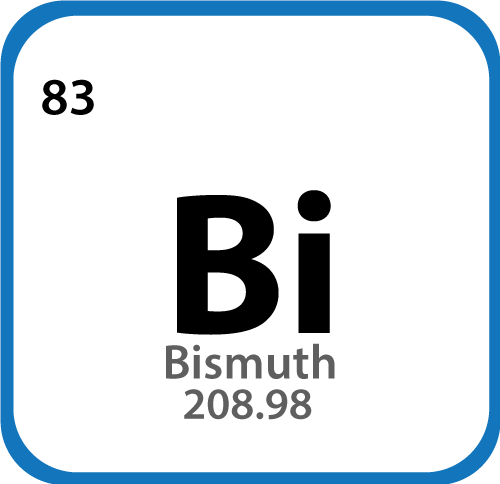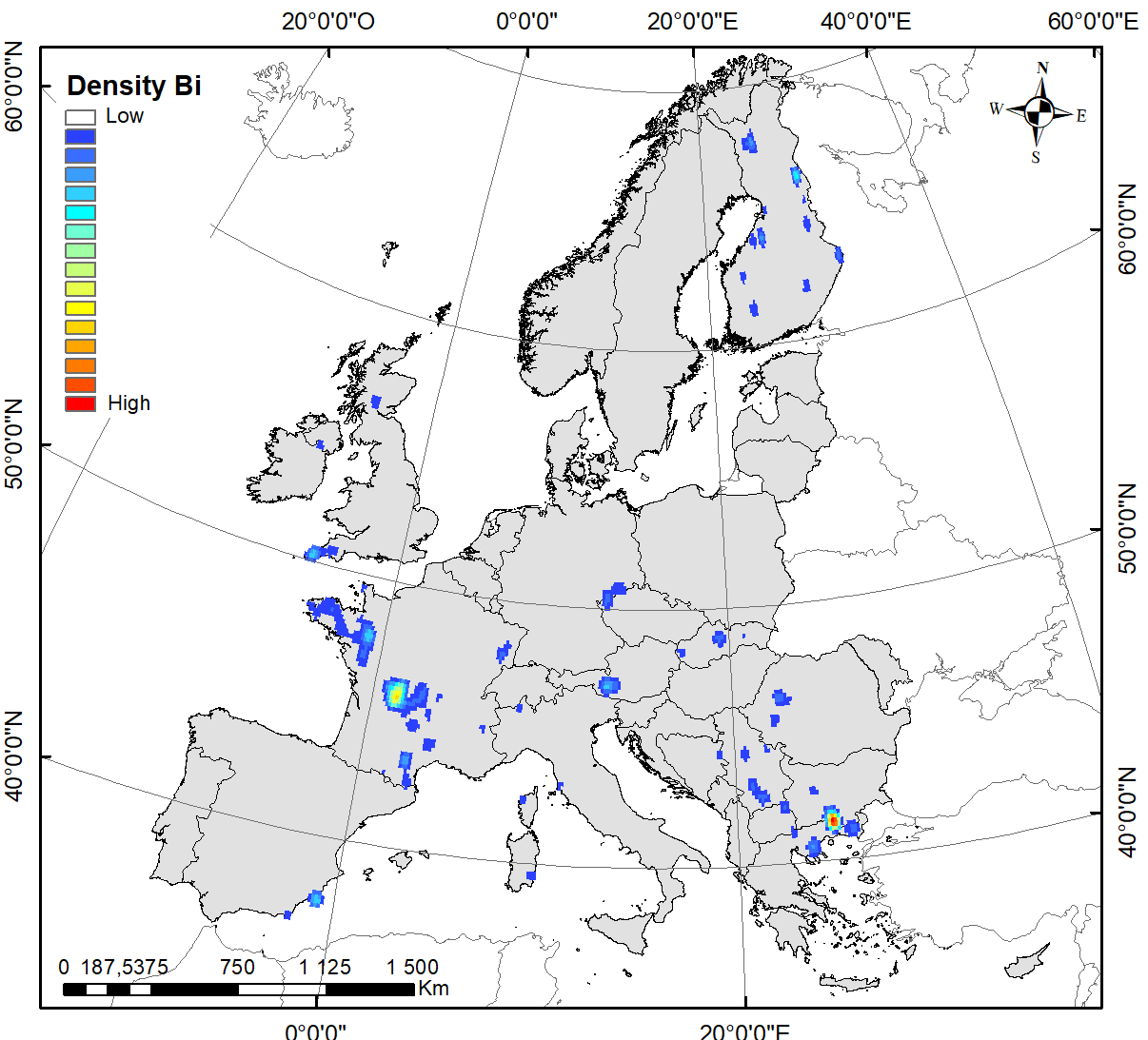About the element
Bismuth is a chemical element with the symbol Bi and atomic number 83. It is a pentavalent post-transition metal and one of the pnictogens with chemical properties resembling its lighter homologs arsenic and antimony. Elemental bismuth may occur naturally, although its sulfide and oxide form important commercial ores.

Key facts
- Symbol: Bi
- Melting point: 271.4 °C
- Atomic number: 83
- Atomic mass: 208.9804 u
Criticality
Most of the targeted by-products elements are Critical Raw Materials (CRMs). CRMs combine raw materials of high importance to the EU economy and of high risk associated with their supply.
Bismuth is part of the EU 2020 Critical Raw Materials List. Its criticality is considered to be medium.
Main uses
Pharmaceuticals and other chemicals: compounds of Bismuth are mainly applied clinically for gastrointestinal disorders as anti-ulcer agents. The use of Bismuth is also seen in nuclear medicine, anticancer, antitumor and antimicrobial studies.
Low melting fusible alloys: Bismuth is used as a replacement for more harmful metals in solders, notably lead. It is used in electronics, food processing equipment and copper water pipes, in X-ray shielding, etc.
And also: in metallurgical additives and a number of other industrial applications such as coatings, pigments, and electronics.
Map of kernel density of weighted Bismuth scores in Europe by DBQ geostatistical method
The map below indicates few areas of potential interest for Bismuth prospection in Europe. It is part of the “Mapping of by-product potential evaluation” (Deliverable 2.1) led by consortium member BRGM.
This map was made based on the current available data and the DBQ geostatistical method, performing a kernel density calculation. The kernel density calculation is a statistical tool which estimates the probability density function of a random variable.


